Delignification Effects on Indonesian Momala (Homalium foetidum) and Korean Red Toon (Toona sinensis) Hardwood Pore Structure and Sound Absorption Capabilities
Abstract
1. Introduction
2. Materials and Methods
2.1. Specimen Preparation
2.2. Delignification Treatment
2.3. SEM Image Analysis
2.4. Measurement of Gas Permeability and Pore Size
2.5. Porosity Classification by Pore Shape
2.6. Measurement of Sound Absorption Coefficient
2.7. Multiple Regression Analysis
3. Results and Discussion
3.1. Morphology Analysis
3.2. Changes of Gas Permeability, Pore Size, and Porosity after Delignification
3.3. Changes of Sound Absorption Coefficient after Delignification
4. Conclusions
Author Contributions
Funding
Institutional Review Board Statement
Informed Consent Statement
Data Availability Statement
Acknowledgments
Conflicts of Interest
References
- Srivastava, S. Effect of noise pollution and its solution through eco-friendly control devices in the North East India. Procedia Eng. 2012, 38, 172–176. [Google Scholar] [CrossRef][Green Version]
- Sharma, S.; Shukla, S.; Sethy, A. Acoustical behaviour of natural fibres-based composite boards as sound-absorbing materials. J. Indian Acad. Wood Sci. 2020, 17, 66–72. [Google Scholar] [CrossRef]
- Yang, T.; Hu, L.; Xiong, X.; Petrů, M.; Noman, M.T.; Mishra, R.; Militký, J. Sound Absorption Properties of Natural Fibers: A Review. Sustainability 2020, 12, 8477. [Google Scholar] [CrossRef]
- Soltani, P.; Taban, E.; Faridan, M.; Samaei, S.E.; Amininasab, S. Experimental and computational investigation of sound absorption performance of sustainable porous material: Yucca Gloriosa fiber. Appl. Acoust. 2020, 157, 106999. [Google Scholar] [CrossRef]
- Mamtaz, H.; Fouladi, M.H.; Al-Atabi, M.; Narayana Namasivayam, S. Acoustic absorption of natural fiber composites. J. Eng. 2016, 2016, 5836107. [Google Scholar] [CrossRef]
- Kolya, H.; Kang, C.-W. High acoustic absorption properties of hackberry compared to nine different hardwood species: A novel finding for acoustical engineers. Appl. Acoust. 2020, 169, 107475. [Google Scholar] [CrossRef]
- Kolya, H.; Kang, C.-W. Effective changes in softwood cell walls, gas permeability and sound absorption capability of Larix kaempferi (larch) by steam explosion. Wood Mater. Sci. Eng. 2021, 1–9. [Google Scholar] [CrossRef]
- Kang, C.-W.; Kang, W.; Chung, W.-Y.; Matsumura, J.; Oda, K. Changes in anatomical features, air permeability and sound absorption capability of wood induced by delignification treatment. J. Fac. Agric. Kyushu Univ. 2008, 53, 479–483. [Google Scholar] [CrossRef]
- Kang, C.-W.; Jang, E.-S.; Lee, N.-H.; Jang, S.-S.; Lee, M. Air permeability and sound absorption coefficient changes from ultrasonic treatment in a cross section of Malas (Homalium foetidum). J. Wood Sci. 2021, 67, 10. [Google Scholar] [CrossRef]
- Chung, H.; Park, Y.; Yang, S.-Y.; Kim, H.; Han, Y.; Chang, Y.-S.; Yeo, H. Effect of heat treatment temperature and time on sound absorption coefficient of Larix kaempferi wood. J. Wood Sci. 2017, 63, 575–579. [Google Scholar] [CrossRef]
- Da Silva Bertolini, M.; de Morais, C.A.G.; Christoforo, A.L.; Bertoli, S.R.; dos Santos, W.N.; Lahr, F.A.R. Acoustic absorption and thermal insulation of wood panels: Influence of porosity. BioResources 2019, 14, 3746–3757. [Google Scholar]
- Tudor, E.M.; Kristak, L.; Barbu, M.C.; Gergeľ, T.; Němec, M.; Kain, G.; Réh, R. Acoustic Properties of Larch Bark Panels. Forests 2021, 12, 887. [Google Scholar] [CrossRef]
- Egab, L.; Wang, X.; Fard, M. Acoustical characterisation of porous sound absorbing materials: A review. Int. J. Veh. Noise Vib. 2014, 10, 129–149. [Google Scholar] [CrossRef]
- Taghiyari, H.; Zolfaghari, H.; Sadeghi, M.; Esmailpour, A.; Jaffari, A. Correlation between specific gas permeability and sound absorption coefficient in solid wood. J. Trop. Sci. 2014, 26, 92–100. [Google Scholar]
- Kang, C.-W.; Jang, E.-S.; Hasegawa, M.; Matsumura, J. Studies of the Relationship Between Sound Absorption Coefficient and Air Permeability of Wood. J. Fac. Agr. Kyushu Univ. 2020, 65, 351–355. [Google Scholar]
- Tan, Y.; Hu, J.; Chang, S.; Wei, Y.; Liu, G.; Wang, Q.; Liu, Y. Relationship between pore structure and gas permeability in poplar (Populus deltoides CL.’55/65’) tension wood. Ann. Sci. 2020, 77, 88. [Google Scholar] [CrossRef]
- Rouquerol, J.; Avnir, D.; Fairbridge, C.; Everett, D.; Haynes, J.; Pernicone, N.; Ramsay, J.; Sing, K.; Unger, K. Recommendations for the characterization of porous solids (Technical Report). Pure Appl. Chem. 1994, 66, 1739–1758. [Google Scholar] [CrossRef]
- Jang, E.-S.; Yuk, J.-H.; Kang, C.-W. An experimental study on change of gas permeability depending on pore structures in three species (hinoki, Douglas fir, and hemlock) of softwood. J. Wood Sci. 2020, 66, 78. [Google Scholar] [CrossRef]
- Esmailpour, A.; Taghiyari, H.R.; Golchin, M.; Avramidis, S. On the fluid permeability of heat treated paulownia wood. Int. Wood Prod. J. 2019, 10, 55–63. [Google Scholar] [CrossRef]
- Silva, M.R.d.; Machado, G.d.O.; Deiner, J.; Calil Junior, C. Permeability measuremens of brazilian eucalyptus. Mater. Res. 2010, 13, 281–286. [Google Scholar] [CrossRef]
- Bao, F.; Lu, J.; Avramidis, S. On the permeability of main wood species in China. Holzforschung 1999, 53, 350–354. [Google Scholar] [CrossRef]
- Jang, E.-S.; Kang, C.-W.; Jang, S.-S. Pore characterization in cross section of yellow poplar (Liriodendron tulipifera) wood. J. Korean Wood Sci. Technol. 2019, 47, 8–20. [Google Scholar] [CrossRef]
- Jang, E.-S.; Kang, C.-W. Changes in gas permeability and pore structure of wood under heat treating temperature conditions. J. Wood Sci. 2019, 65, 37. [Google Scholar] [CrossRef]
- He, S.; Lin, L.; Fu, F.; Zhou, Y.; Fan, M. Microwave treatment for enhancing the liquid permeability of Chinese fir. BioResources 2014, 9, 1924–1938. [Google Scholar] [CrossRef]
- Tanaka, T.; Avramidis, S.; Shida, S. A preliminary study on ultrasonic treatment effect on transverse wood permeability. Ciencia y Tecnología 2010, 12, 3–9. [Google Scholar] [CrossRef]
- Zhang, Y.; Cai, L. Effects of steam explosion on wood appearance and structure of sub-alpine fir. Wood Sci. Technol. 2006, 40, 427. [Google Scholar] [CrossRef]
- Grönquist, P.; Frey, M.; Keplinger, T.; Burgert, I. Mesoporosity of delignified wood investigated by water vapor sorption. ACS Omega 2019, 4, 12425–12431. [Google Scholar] [CrossRef]
- Song, J.; Chen, C.; Zhu, S.; Zhu, M.; Dai, J.; Ray, U.; Li, Y.; Kuang, Y.; Li, Y.; Quispe, N. Processing bulk natural wood into a high-performance structural material. Nature 2018, 554, 224–228. [Google Scholar] [CrossRef]
- Jansen, S.; Kitin, P.; De Pauw, H.; Idris, M.; Beeckman, H.; Smets, E. Preparation of wood specimens for transmitted light microscopy and scanning electron microscopy. Belg. J. Bot. 1998, 131, 41–49. [Google Scholar]
- Jang, E.-S.; Kang, C.-W. Do Face Masks become Worthless after Only One Use in the COVID-19 Pandemic? Infect. Chemother. 2020, 52, 583–591. [Google Scholar] [CrossRef]
- American Society for Testing and Materials; Committee D-19 on Water; ASTM_F316-03. Standard Test Methods for Pore Size Characteristics of Membrane Filters by Bubble Point and Mean Flow Pore Test; ASTM International: West Conshohocken, PA, USA, 2019. [Google Scholar]
- Lindgren, L. Medical CAT-scanning: X-ray absorption coefficients, CT-numbers and their relation to wood density. Wood Sci. Technol. 1991, 25, 341–349. [Google Scholar] [CrossRef]
- Vermaas, H. The dielectric constant of solid wood substance calculated with two different methods. Holzforschung 1976, 30, 97–98. [Google Scholar]
- ISO 354. Acoustics—Measurement of Sound Absorption in a Reverberation Room; International Organization for Standardization (ISO): Geneva, Switzerland, 2003. [Google Scholar]
- ISO 11534-2. Acoustics-Determination of Sound Absorption Coefficient and Impedance in Impedance Tubes-Part 2 Transfer-Function Method; International Organization for Standardization (ISO): Geneva, Switzerland, 2001. [Google Scholar]

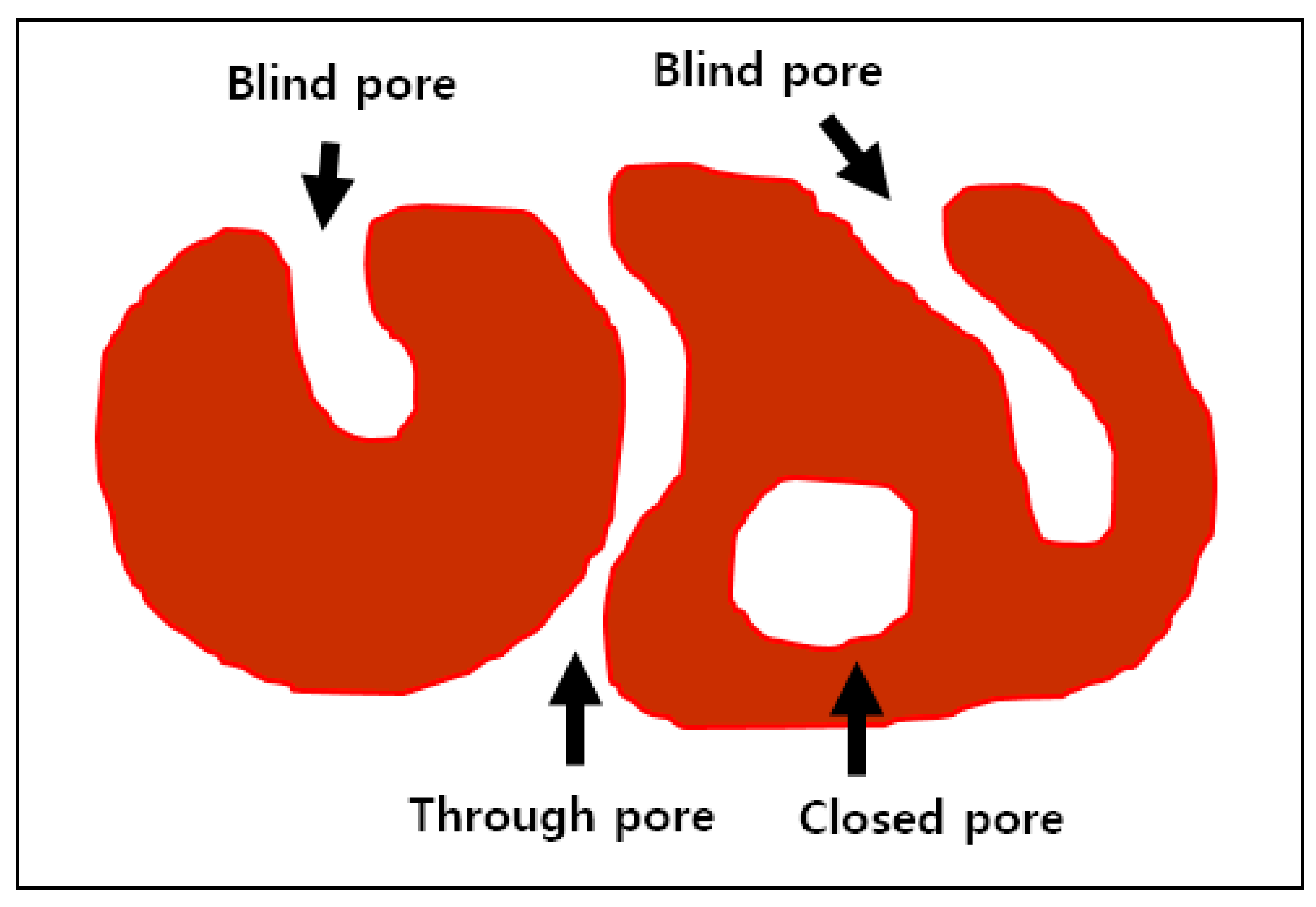
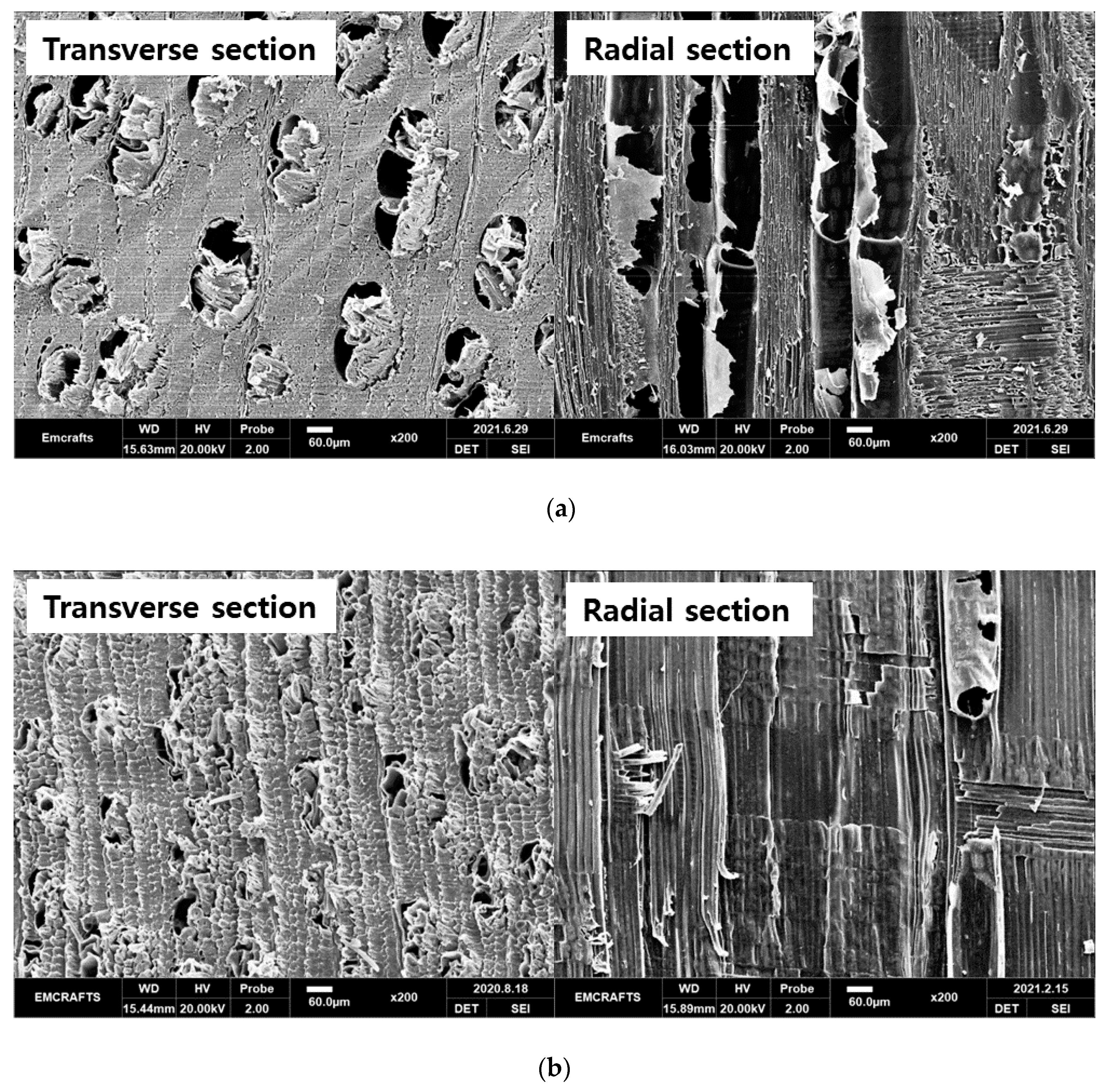
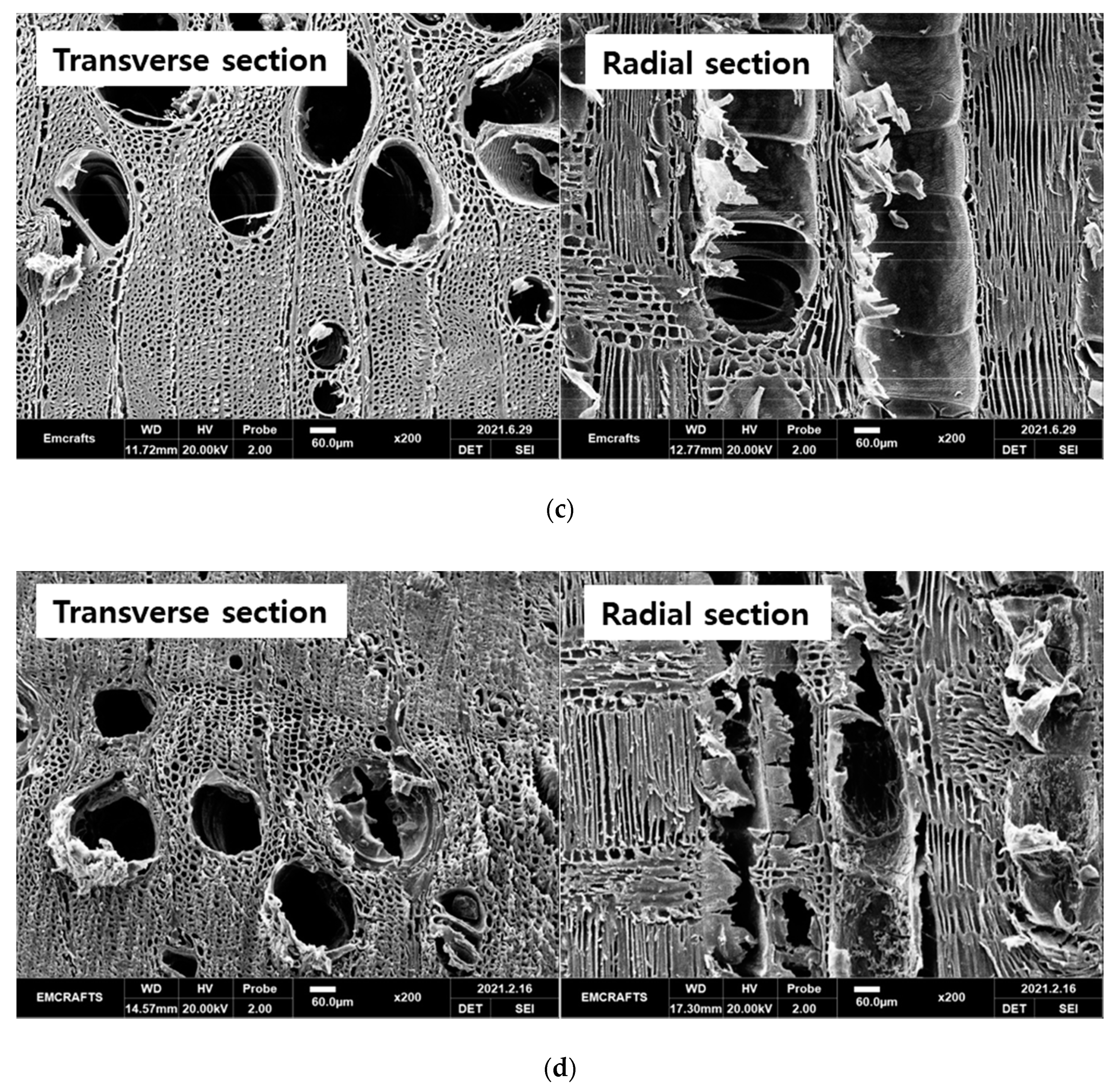
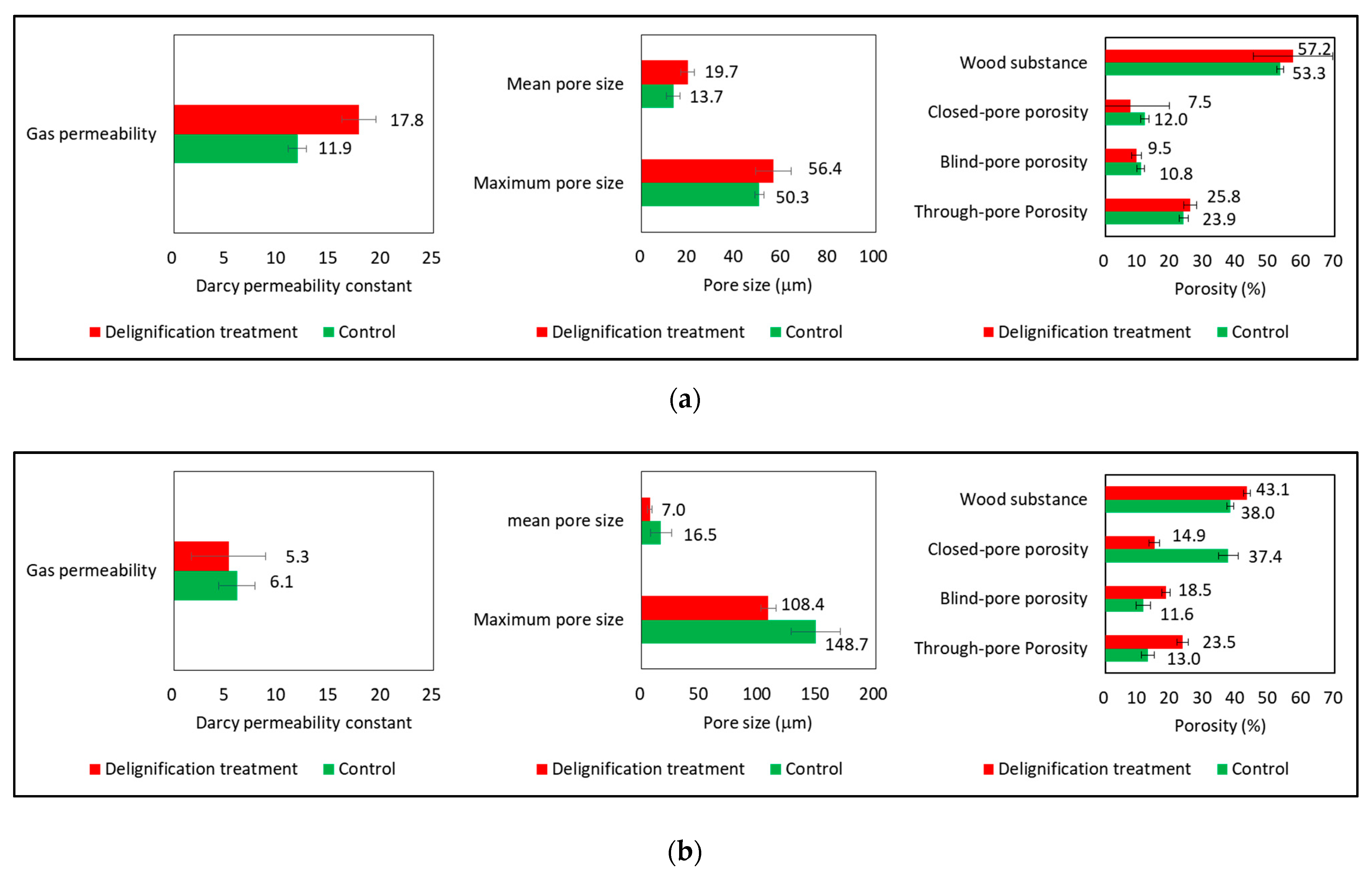
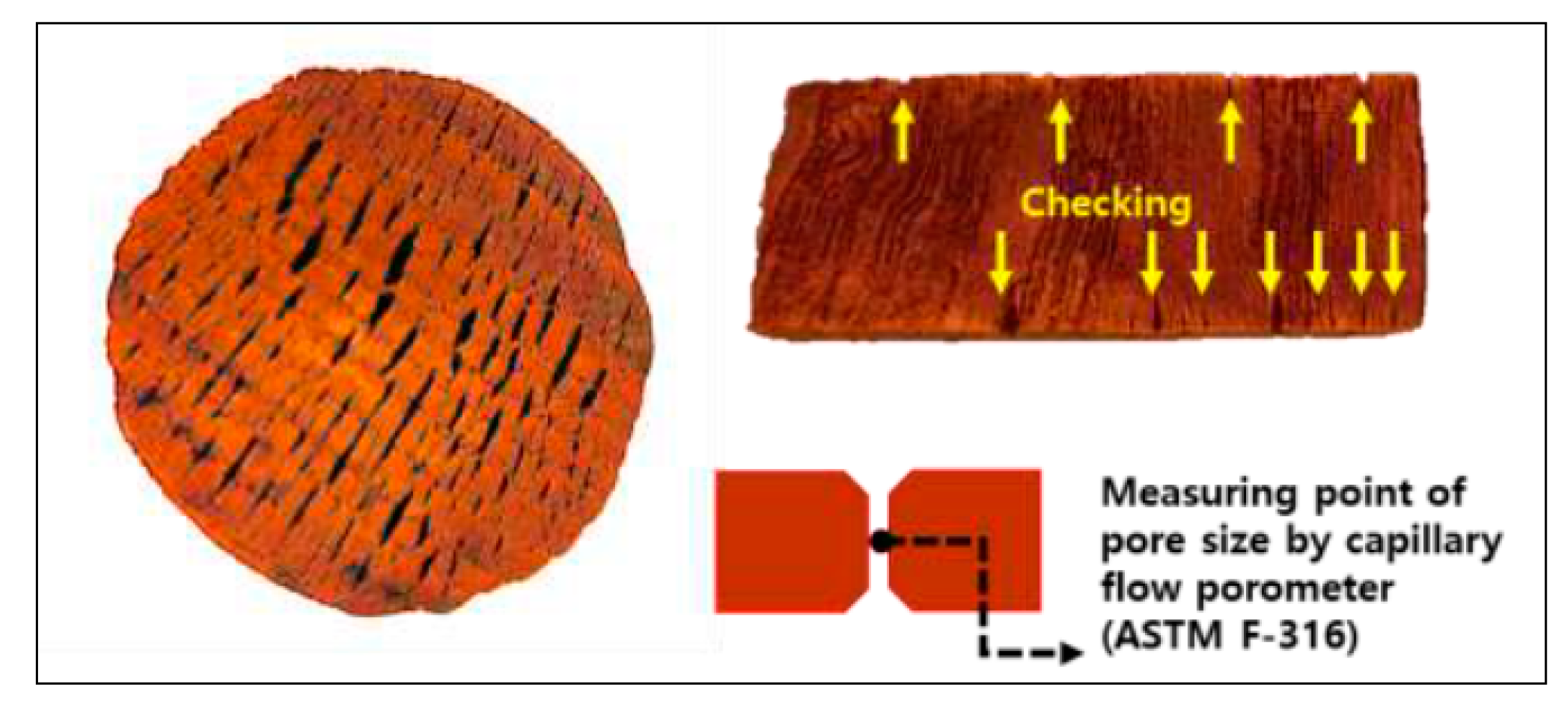
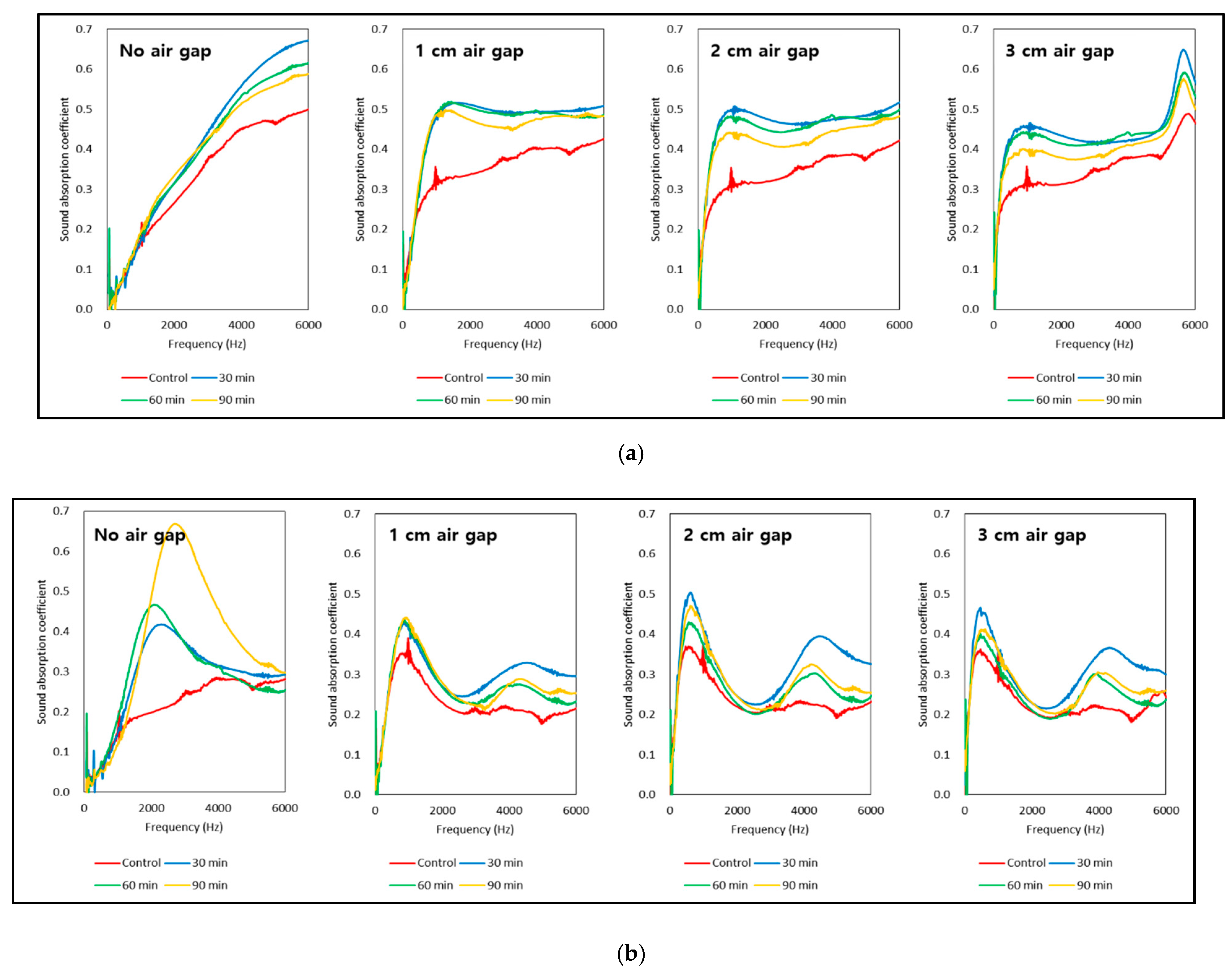
| Air Gap (cm) | Delignification Time | |||||||
|---|---|---|---|---|---|---|---|---|
| Control | 30 min | 60 min | 90 min | |||||
| Momala | Red Toon | Momala | Red Toon | Momala | Red Toon | Momala | Red Toon | |
| Non | 0.141 | 0.046 | 0.152 | 0.163 | 0.158 | 0.188 | 0.160 | 0.169 |
| (0.004) | (0.011) | (0.009) | (0.009) | (0.014) | (0.013) | (0.010) | (0.016) | |
| 1 | 0.262 | 0.246 | 0.346 | 0.278 | 0.344 | 0.281 | 0.338 | 0.280 |
| (0.018) | (0.011) | (0.022) | (0.030) | (0.018) | (0.027) | (0.028) | (0.028) | |
| 2 | 0.275 | 0.289 | 0.405 | 0.351 | 0.398 | 0.317 | 0.369 | 0.329 |
| (0.016) | (0.027) | (0.023) | (0.021) | (0.024) | (0.046) | (0.020) | (0.044) | |
| 3 | 0.292 | 0.293 | 0.406 | 0.347 | 0.394 | 0.316 | 0.359 | 0.324 |
| (0.022) | (0.031) | (0.030) | (0.046) | (0.023) | (0.047) | (0.023) | (0.040) | |
| Y = α0 + β1X1 + β2X2 + β3D1 + ε | ||||
|---|---|---|---|---|
| Variables | Coeff. | Std. Coeff. | t-stat. | VIF |
| α0 | 0.149 | - | 25.665 ** | |
| X1 | 0.001 | 0.140 | 4.666 ** | 1.000 |
| X2 | 0.060 | 0.825 | 27.406 ** | 1.000 |
| D1 | 0.019 | 0.115 | 3.826 ** | 1.000 |
| Adj. R2 | 0.711 | |||
| F-Value | 262.505 | |||
| p-value | <0.001 | |||
Publisher’s Note: MDPI stays neutral with regard to jurisdictional claims in published maps and institutional affiliations. |
© 2021 by the authors. Licensee MDPI, Basel, Switzerland. This article is an open access article distributed under the terms and conditions of the Creative Commons Attribution (CC BY) license (https://creativecommons.org/licenses/by/4.0/).
Share and Cite
Jang, E.-S.; Kang, C.-W. Delignification Effects on Indonesian Momala (Homalium foetidum) and Korean Red Toon (Toona sinensis) Hardwood Pore Structure and Sound Absorption Capabilities. Materials 2021, 14, 5215. https://doi.org/10.3390/ma14185215
Jang E-S, Kang C-W. Delignification Effects on Indonesian Momala (Homalium foetidum) and Korean Red Toon (Toona sinensis) Hardwood Pore Structure and Sound Absorption Capabilities. Materials. 2021; 14(18):5215. https://doi.org/10.3390/ma14185215
Chicago/Turabian StyleJang, Eun-Suk, and Chun-Won Kang. 2021. "Delignification Effects on Indonesian Momala (Homalium foetidum) and Korean Red Toon (Toona sinensis) Hardwood Pore Structure and Sound Absorption Capabilities" Materials 14, no. 18: 5215. https://doi.org/10.3390/ma14185215
APA StyleJang, E.-S., & Kang, C.-W. (2021). Delignification Effects on Indonesian Momala (Homalium foetidum) and Korean Red Toon (Toona sinensis) Hardwood Pore Structure and Sound Absorption Capabilities. Materials, 14(18), 5215. https://doi.org/10.3390/ma14185215








